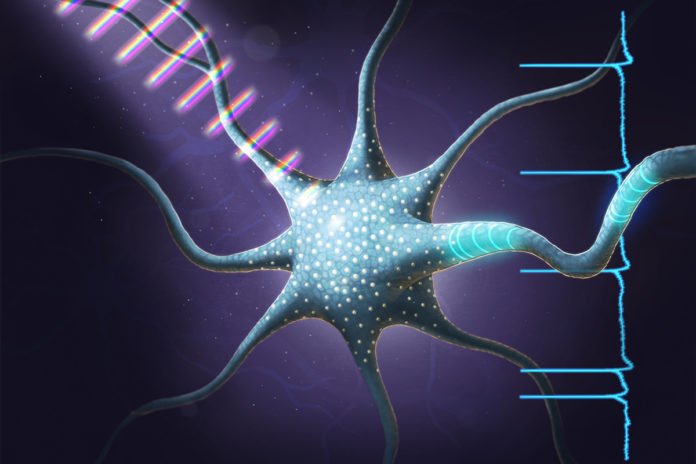A new study by the University of Illinois suggests that specially tailored, ultra fast light pulses can trigger neurons activity. It might one day able to help patients with light-delicate circadian or disposition issues.
Scientists used carefully crafted light beams, called coherent control, to monitor chemical reactions. Particularly, they used optogenetic mouse neurons – that is, cells that had a gene added to make them respond to light.
Dr. Stephen Boppart, the leader of the study said, “The eye is the window to the soul’ has some merit because our bodies respond to light. Photoreceptors in our retinas connect to different parts of the brain that control mood, metabolic rhythms, and circadian rhythms.”
After that, scientists excited light-sensitive channel in the membrane of neurons. When the channels were excited, they allowed ions through, which caused the neurons to fire.
Most of the natural biological systems are usual to the consistent solar light. Here, scientists used a whirlwind of short light heartbeats – under 100 femtoseconds. This conveys a ton of vitality in a brief timeframe, energizing the atoms to various vitality states. Alongside controlling the length of the light heartbeats, Boppart’s group controls the request of wavelengths in each light heartbeat.
Boppart said, “When you have an ultrashort or ultrafast pulse of light, there are many colors in that pulse. We can control which colors come first and how bright each color will be.”
“For example, blue wavelengths are much higher energy than red wavelengths. If we choose which color comes first, we can control what energy the molecule sees at what time, to drive the excitement higher or back down to the baseline. If we create a pulse where the red comes before the blue, it’s very different than if the blue comes before the red.”
Such coherent control could give optogenetics studies more flexibility. Although, the changing properties of light allows for more avenues than having to engineer mice with new genes every time they want a different neuron behavior.
Now, scientists are working to test their coherent control technique with naturally light-responsive cells and processes – retinal cells and photosynthesis.
Boppart said, “What we’re doing for the very first time is using light and coherent control to regulate biological function. This is fundamentally more universal than optogenetics – that’s just the first example we used.”
“Ultimately, this could be a gene-free, drug-free way of regulating cell and tissue function. We think there could be ‘opto-ceuticals,’ methods of treating patients with light.”
